Motorola has announced the latest phones in its impressive foldable range, the Razr 60 and the Razr 60 Ultra.
The Motorola Razr 50 Ultra was arguably our favourite foldable of 2024, while the Razr 50 was a tantalisingly affordable (relatively speaking) alternative.
So how do their follow-ups, the Motorola Razr 60 Ultra and Razr 60 stack up? More importantly, how do they compare to one another?
We’re still in the early days of assembling our thoughts on both phones, but here’s how Motorola’s 2025 foldables – known as the the Razr (2025) and Razr Ultra (2025) in the US – stack up to one another.
Design & Build
While both of these devices look a lot like their immediate flip-phone predecessors, both feature redesigned titanium-reinforced hinges that can withstand up to 35% more folds than the Razr 50 generation.
Both also IP48 dust and underwater protection (up from IPX8), which means they’re more dust resistant than before while remaining safe from a dunking in freshwater.
The two Razr 60 models are quite similar in size. The Ultra measures 73.99 x 171.48 x 7.19mm while open, compared to the Razr 60’s 73.99 x 171.30 x 7.25mm. However, the Ultra is a fair bit heavier at 199g compared to the Razr 60’s 188g.
The Motorola Razr 60 Ultra is available in four special finishes: luxurious soft-touch Alcantara (the first phone to use the Italian brand), real wood, luxe satin-inspired finish, and faux leather.
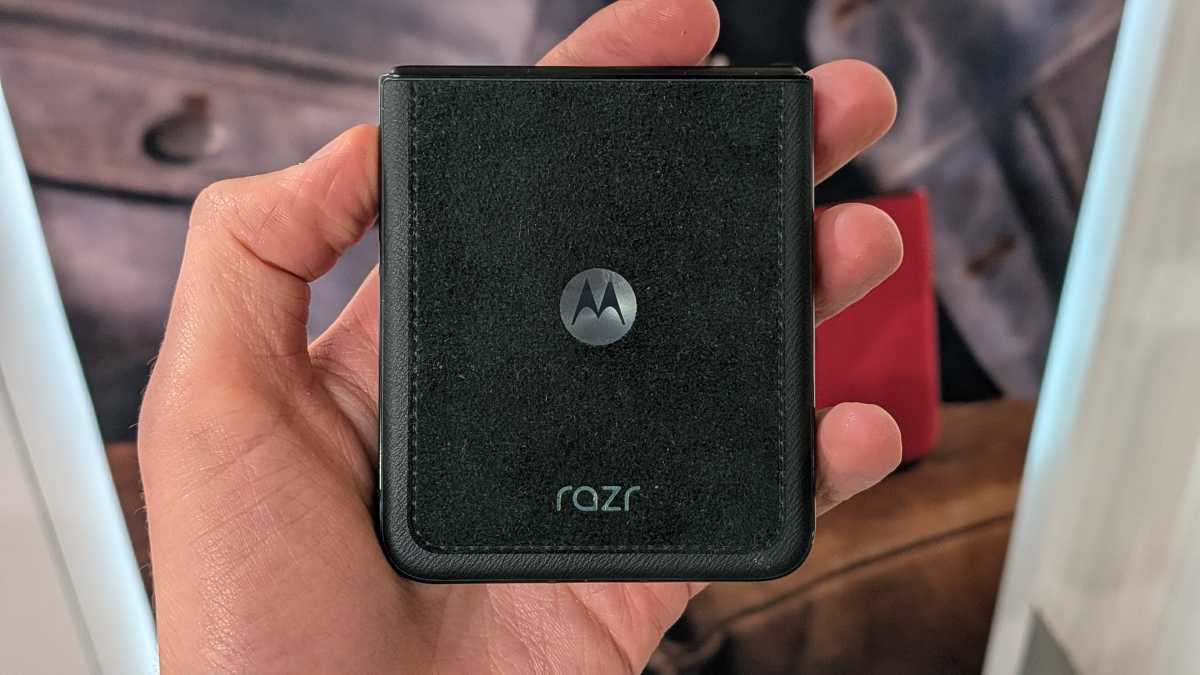
Anyron Copeman / Foundry
With the Razr 60, you can choose from a durable faux leather finish, a nylon-inspired finish, or lightweight Acetate.
The Ultra model also gives you a new dedicated AI Key, which lets you quickly access Moto AI features.
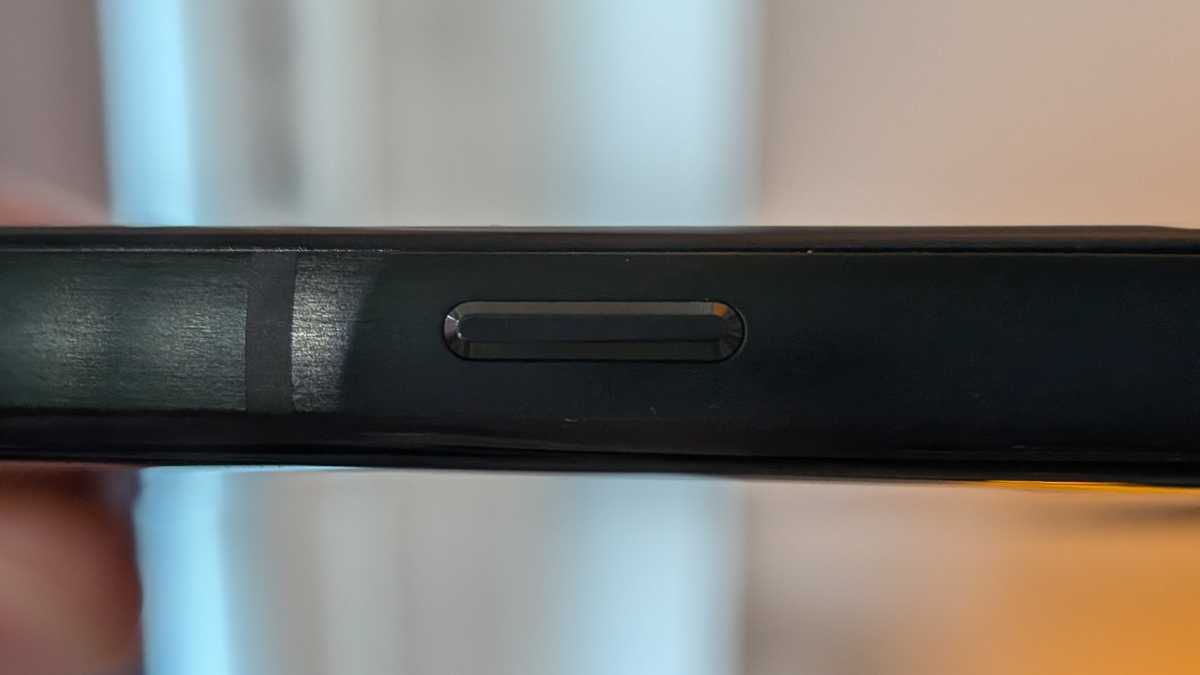
Anyron Copeman / Foundry
Displays
The Motorola Razr 60 Ultra features a huge 7-inch pOLED display on its internal surface, which is slightly larger than the Razr 60’s still-huge 6.9-inch panel.
The Ultra’s internal display is the first flip phone screen to be Pantone Validated, continuing the company’s work with the colour matching company.

Anyron Copeman / Foundry
It’s also sharper than its little brother, with a so-called Super HD resolution (aka 1224p) with a pixel density of 464ppi. The Razr 60’s main screen, by contrast, is FHD+ with a pixel density of 413ppi.
Both are LTPO panels, so can vary their refresh rate according to the task at hand. However, while the Razr 60 Ultra can scale right up to 165Hz in supported games, the Razr 60 can only hit 120Hz.
The Ultra model can also get brighter to the tune of a 4500 nits peak. The Razr 60, on the other hand, can hit 3000 nits. Only the Razr 60 Ultra display supports Dolby Vision.
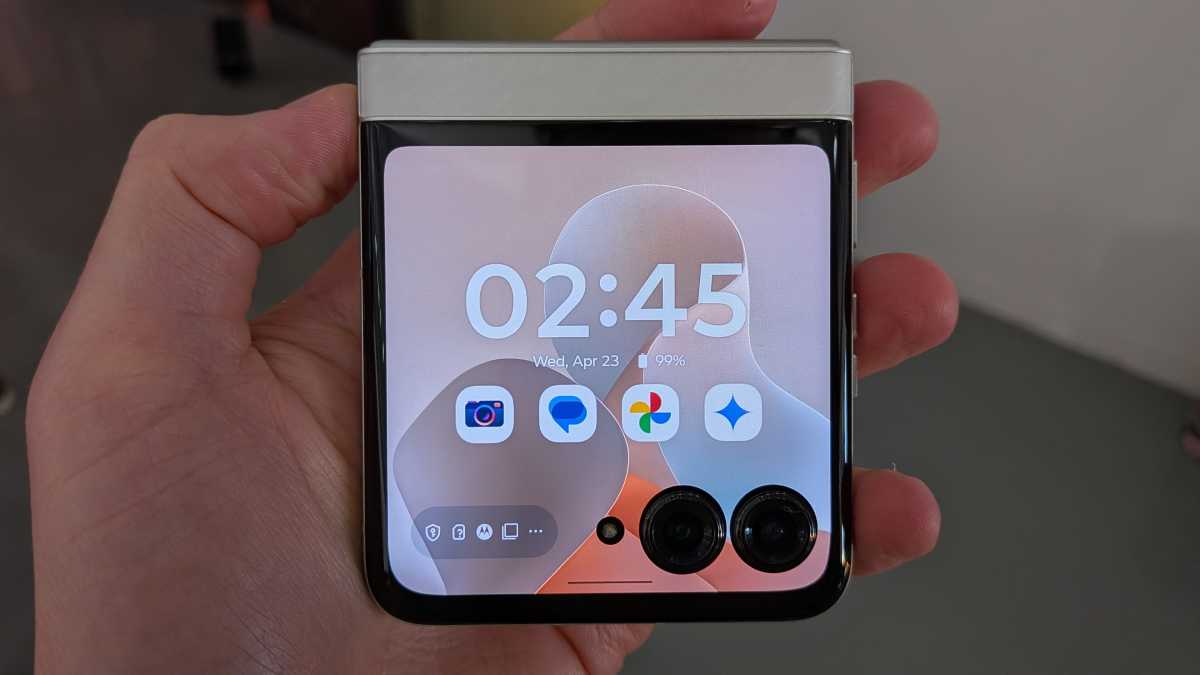
Anyron Copeman / Foundry
As for the internal display, the Razr 60 Ultra’s is a 4-inch pOLED with a 165Hz refresh rate, compared to the Razr 60’s 3.6-inch pOLED 90Hz panel. While the Ultra can hit 3000 nits, the Razr 60 can only hit 1700 nits.
The Razr 60 Ultra is the first flip phone to coat its external display in Corning Gorilla Glass Ceramic, which has 10x better drop resistance than the others. The Razr 60’s external display uses Gorilla Glass Victus.
Both camera systems feature Pantone Validated and Pantone SkinTone Validated approvals, which promises to supply ample colour.
Cameras
The Razr 60 Ultra features the world’s first triple 50Mp camera system on a flip phone, though one of those is a 50MP selfie camera. There’s no dedicated telephoto here.
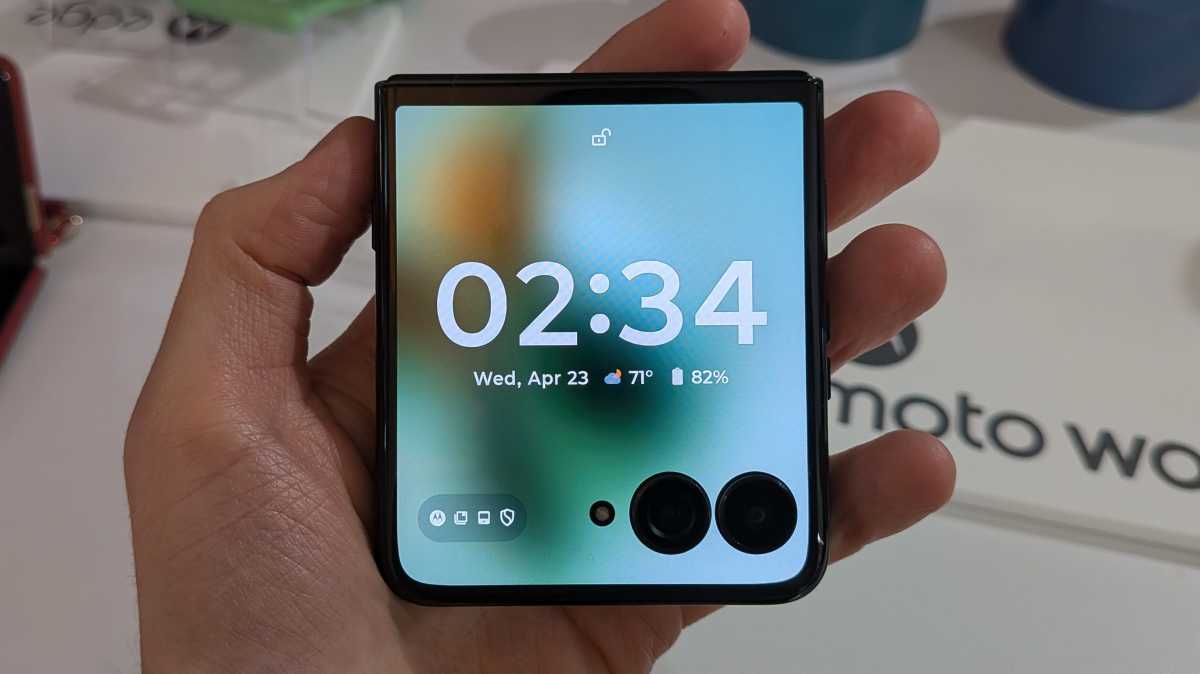
Anyron Copeman / Foundry
The Razr 60, meanwhile, gives you a 50MP main camera, a 13MP ultra-wide, and a 32MP selfie cam.
Both of those ultra-wide cameras also feature the ability to capture macro shots.
When it comes to video capture, the Razr 60 Ultra supports up to 8K at 30fps or 4K at 60fps, while the Razr 60 supports 4K at 30fps or 1080p at 60fps.
Only the Ultra offers the ability to capture, edit, and indeed watch videos back in Dolby Vision.
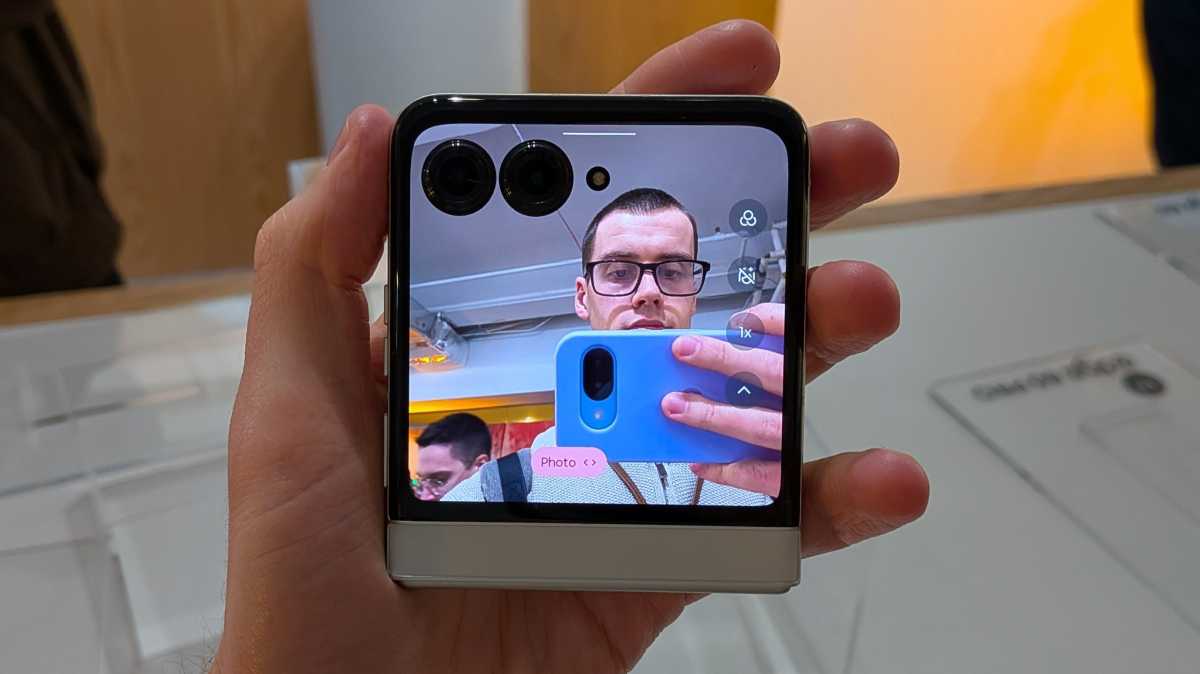
Anyron Copeman / Foundry
Performance
There’s a clear gap in performance here, with the Razr 60 Ultra running on the flagship Snapdragon 8 Elite chip. That’s as fast as it gets right now, and it’s backed by 16GB of LPDDR5X RAM.
The Razr 60, on the other hand, runs on the new but more upper-mid-range MediaTek Dimensity 7400X. This is backed by 8GB of LPDDR4X RAM.
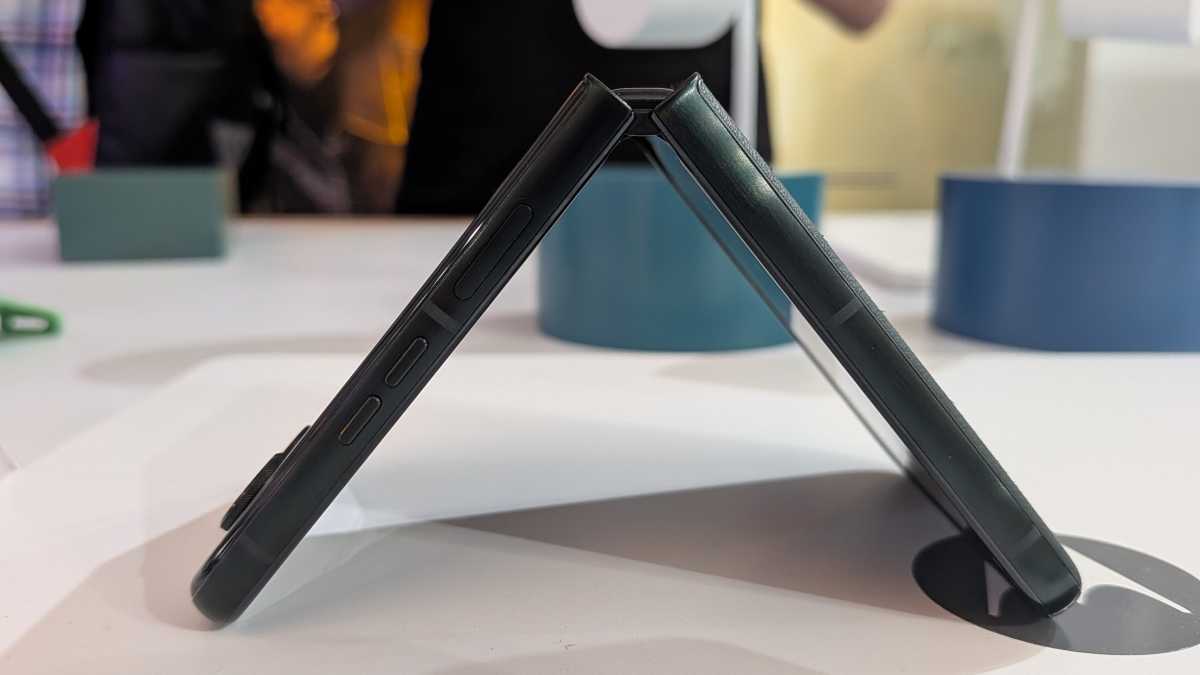
Anyron Copeman / Foundry
There’s either 512GB or 1TB of storage on the Ultra model, and either 256GB or 512GB on the plain Razr 60.
Software
Both phones run on Android 15, and both offer access to Moto AI – Motorola’s suite of AI features, including Catch Me Up, Pay Attention, and Remember This. Next Move, meanwhile, recognises whatever’s on the screen (think recipes or travel itineraries) and offers suggestions.
Smart Connect with AI lets you pull up media on your TV with a simple vocal prompt.
As already stated, the Motorola Razr 60 Ultra features a dedicated AI button for accessing Moto AI features in a snap.
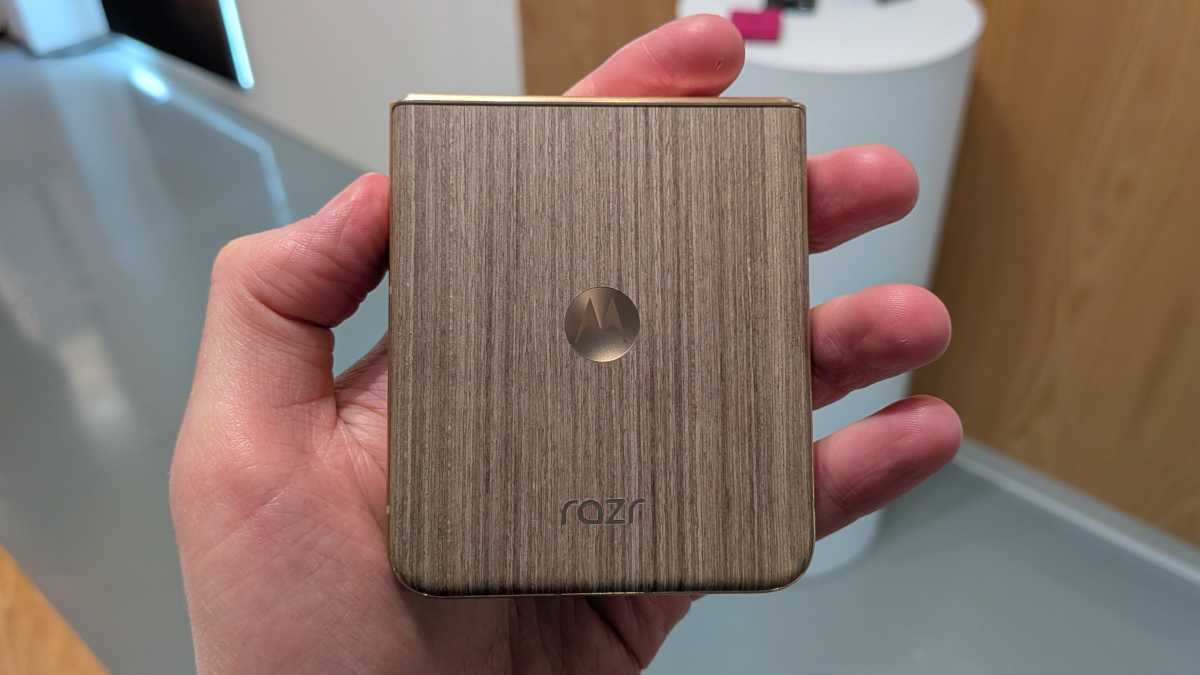
Anyron Copeman / Foundry
Battery & Charging
As you’d expect, the Motorola Razr 60 Ultra has the bigger battery of the two. It has a 4700mAh cell to the Razr 60’s 4500mAh.
The Ultra also supports faster 68W TurboPower wired charging and 30W wireless. The Razr 60, on the other hand, only stretches to 30W TurboPower charging and 15W wireless.
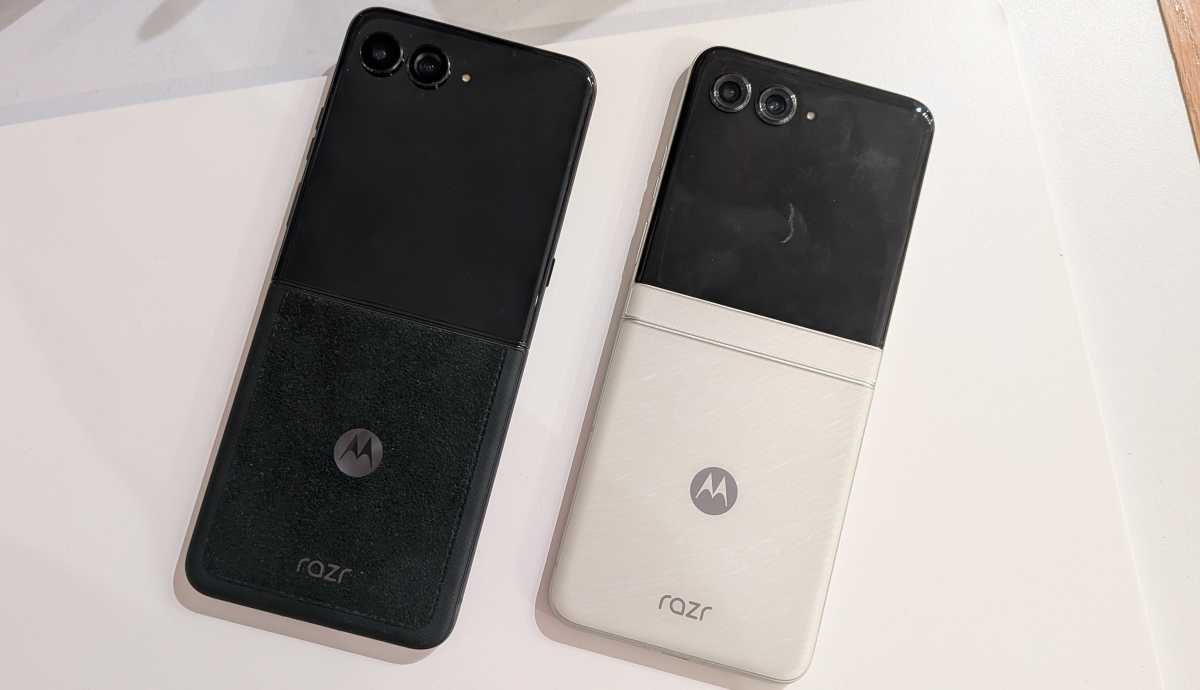
Anyron Copeman / Foundry
Price & Availability
Both the Razr 60 Ultra and the Razr 60 are available to buy from today. Pricing starts from €1,299 for the Ultra and €799 for the Razr 60.
We’ll update this once UK and US pricing and availability are confirmed.
Should you buy the Motorola Razr 60 or Razr 60 Ultra?
It depends how much you want to spend and what your priorities are. The Razr 60 Ultra is clearly the better phone, but it’s priced to match.
However, if you’re new to a flip phone and are looking for something more affordable, the regular Razr 60 is still a strong choice. Look out for our full reviews of both soon, but the Ultra in particular is set to be a key rival to Samsung’s upcoming Galaxy Z Flip 7.








